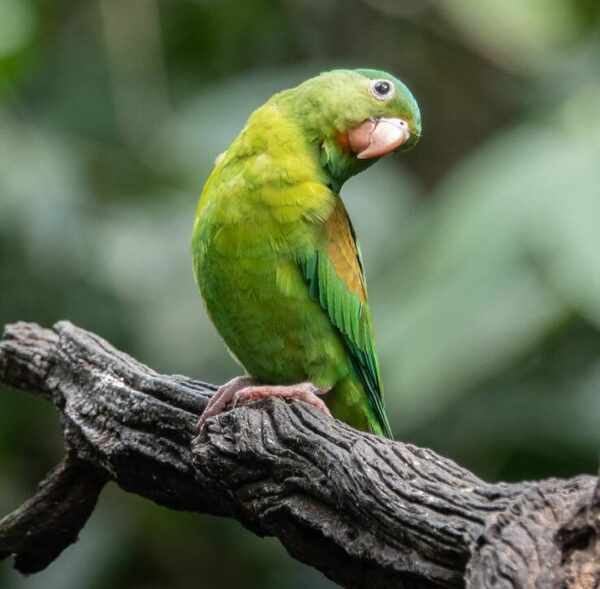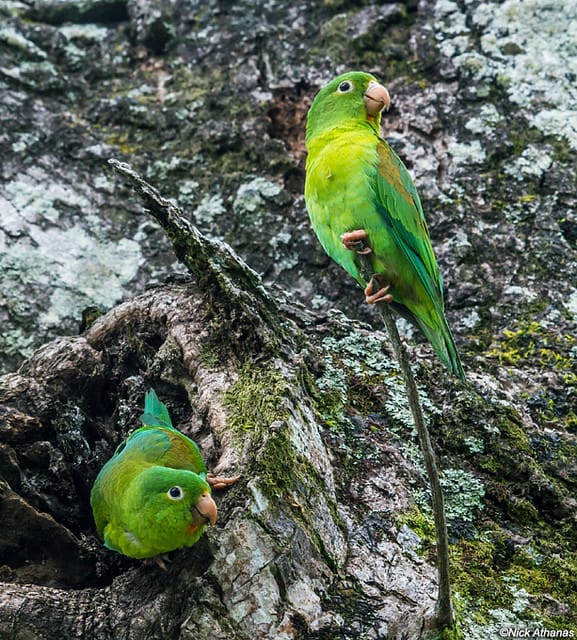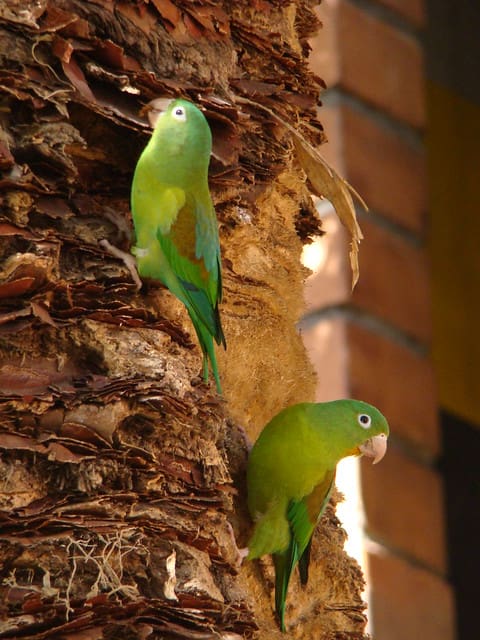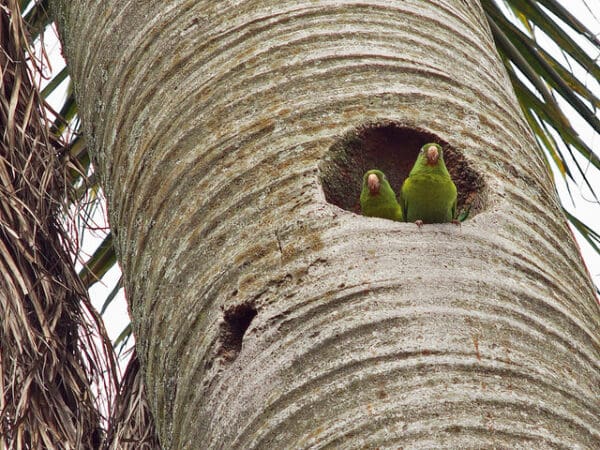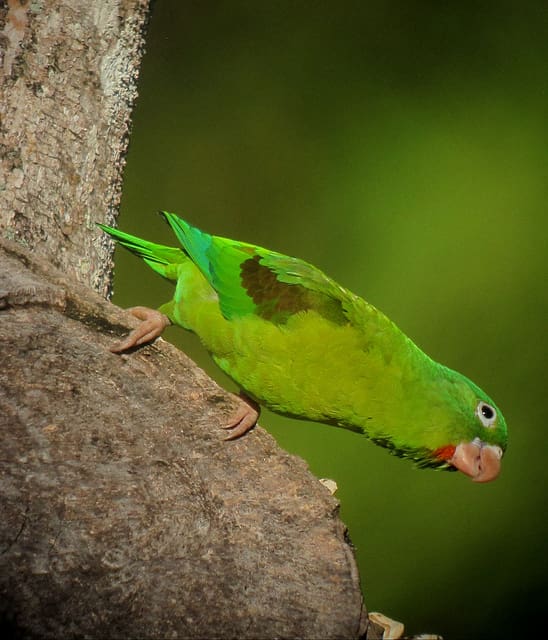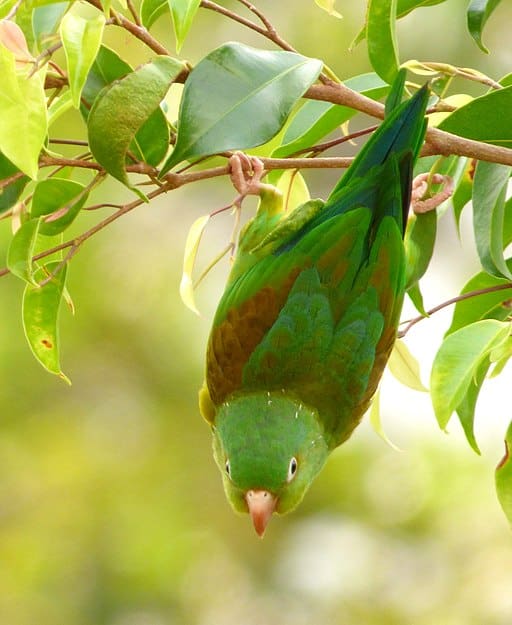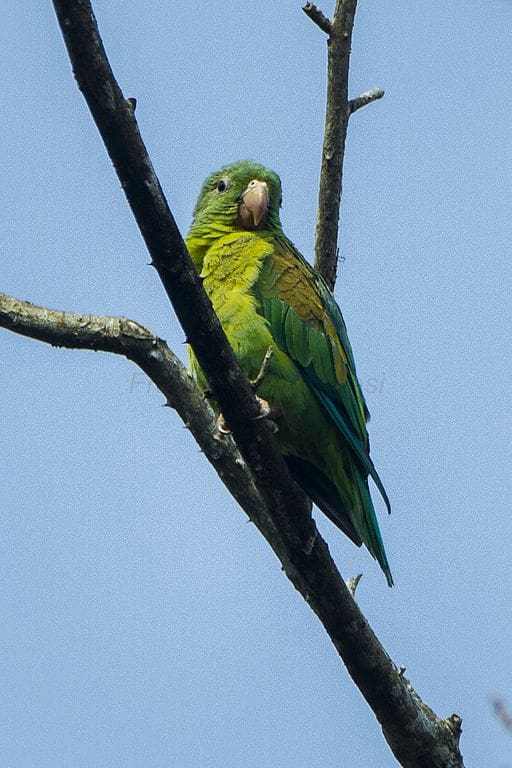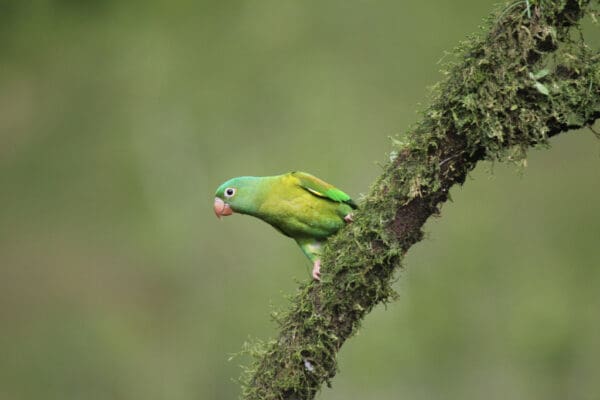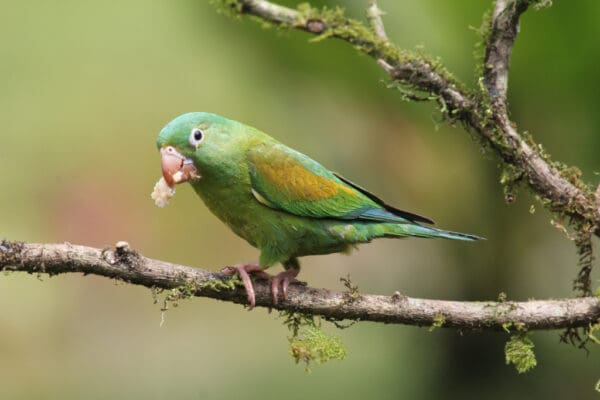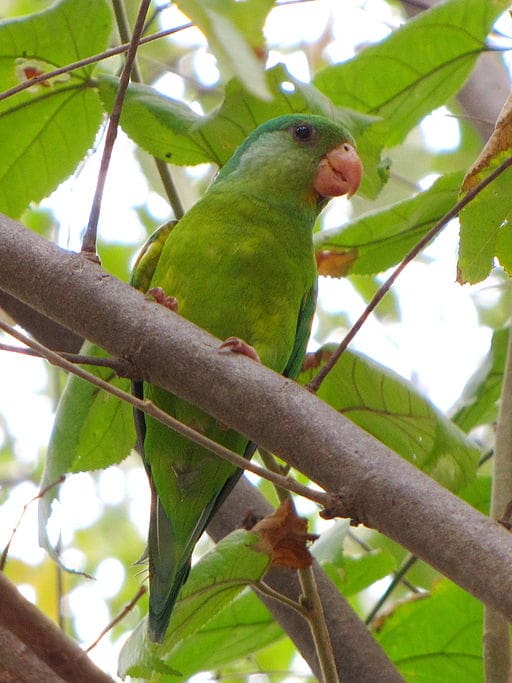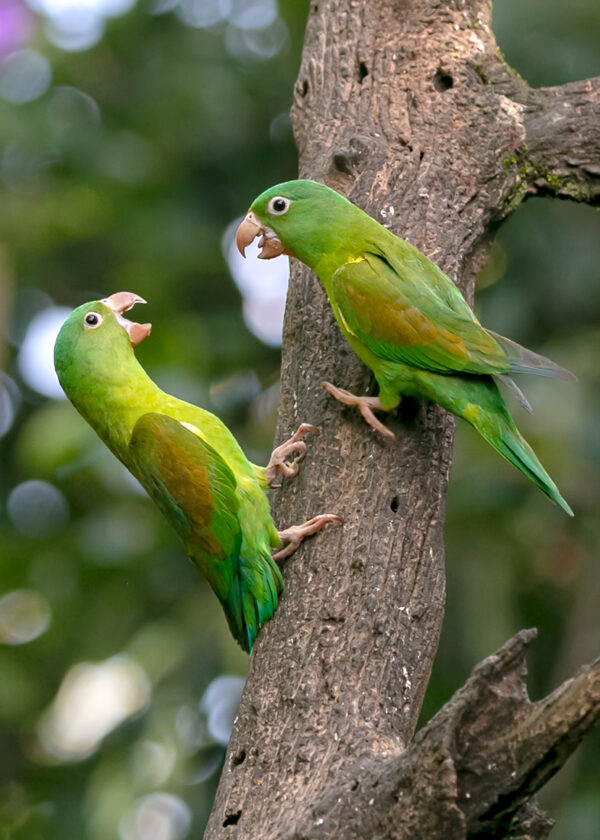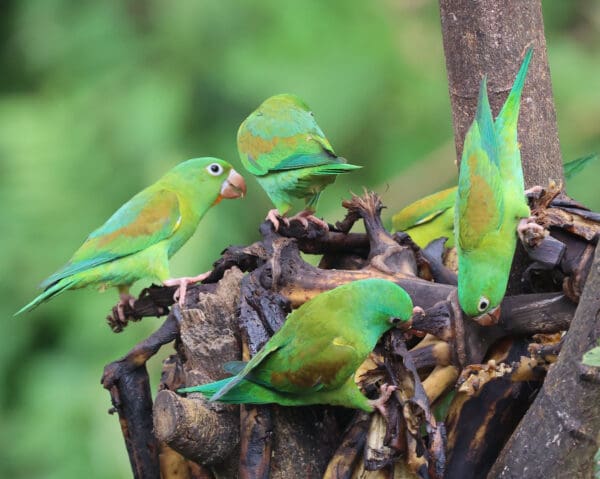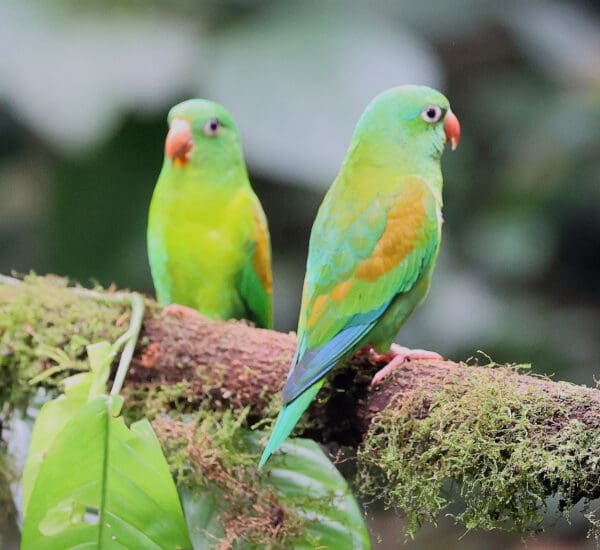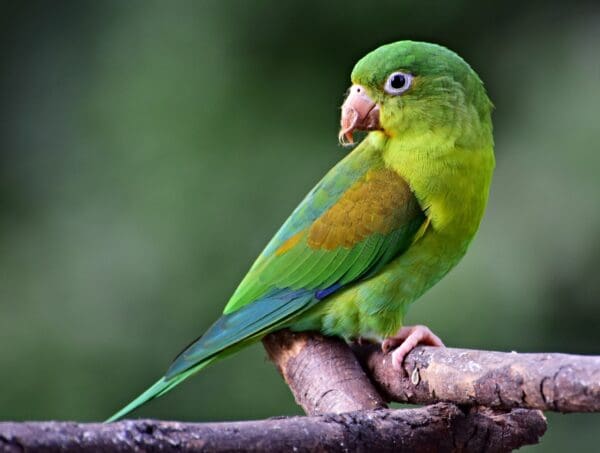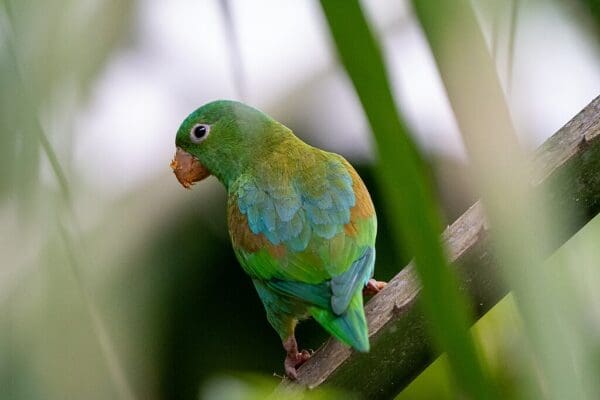Orange-chinned Parakeet
Also known as:
Tovi Parakeet, Brown-shouldered Parakeet, Beebee Parakeet
Also known as:
Tovi Parakeet, Brown-shouldered Parakeet, Beebee Parakeet
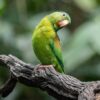
![© Nick Athanas [CC BY-SA 2.0] via Flickr Wild Orange-chinned Parakeets explore a tree cavity](https://parrots.org/wp-content/uploads/2023/01/wpt_Orange-chinned-Parakeet_1377-19-100x100.jpg)
![© Felix Uribe [CC BY-SA 2.0] via Flickr Wild Orange-chinned Parakeets forage for fruit](https://parrots.org/wp-content/uploads/2023/01/wpt_Orange-chinned-Parakeet_1377-18-100x100.jpg)
![© Ivan Erre Jota [CC BY-SA 2.0] via Flickr Wild Orange-chinned Parakeets cling to a tree trunk](https://parrots.org/wp-content/uploads/2023/01/wpt_Orange-chinned-Parakeet_1377-17-100x100.jpg)
![© Bernal Saborio [CC BY-SA 2.0] via Flickr Wild Orange-winged Parakeets perch at the entrance of a nest cavity](https://parrots.org/wp-content/uploads/2023/01/wpt_Orange-chinned-Parakeet_1377-16-100x100.jpg)
![© Felix Uribe [CC BY-SA 2.0] via Flickr A wild Orange-chinned Parakeet clings to a tree trunk](https://parrots.org/wp-content/uploads/2023/01/wpt_Orange-chinned-Parakeet_1377-15-100x100.jpg)
![© Alejandro Bayer Tamayo from Armenia, Colombia [CC BY-SA 2.0] via Wikimedia Commons A wild Orange-chinned Parakeet hangs upside down from a branch](https://parrots.org/wp-content/uploads/2023/01/wpt_Orange-chinned-Parakeet_1377-13-100x100.jpg)
![© Francesco Veronesi from Italy [CC BY-SA 2.0] via Wikimedia Commons A wild Orange-chinned Parakeet perches on a branch](https://parrots.org/wp-content/uploads/2023/01/wpt_Orange-chinned-Parakeet_1377-8-100x100.jpg)
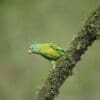
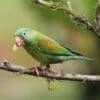
![© Cristóbal Alvarado Minic [CC BY 2.0] via Wikimedia Commons A wild Orange-chinned Parakeet perches on a branch](https://parrots.org/wp-content/uploads/2023/01/wpt_Orange-chinned-Parakeet_1377-1-100x100.jpg)
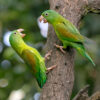
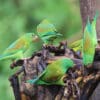
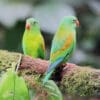
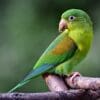

DID YOU KNOW?
Over a hundred years ago a blue mutation of the Orange-chinned Parakeet was reportedly spotted in a wild flock. This bird had a white spot on its chin where the orange should be.

Brotogeris

jugularis
Size:
18 cm (7 in)
Weight:
58 g (2 oz)
Subspecies including nominate:
two: B.j. jugularis, B.j. exsul
Colour Adult:
B.j. jugularis: Both adults body plumage mostly yellow/green to olive/green; blue tinge to occiput and crown; orange chin; olive-suffused mantle; blue tinge to lower back and rump; olive/brown lesser and median wing coverts. Beak horn colour. Eye-ring bare and white. Eye dark brown.
B.j. exsul: Both adults as in jugularis but bright green thighs and undertail coverts not tinged with blue; orange chin less pronounced; olive wash on mantle more extensive; darker brown lesser and median wing coverts.
Colour Juvenile:
B.j. jugularis: As in adults.
Call:
Calls made in flight reported to be harsh and continuous; also scratchy and more musical notes, some sharp and abrupt. Captive pairs reportedly duet.
More Information:
Content Sources:
CITES
BirdLife International
Cornell Lab of Ornithology/Birds of the World
Parrots: A Guide to Parrots of the World, Juniper and Parr, 1998
Parrots of the World, Forshaw and Cooper, 1977. 2010 edition
Parrots of the World, Forshaw, 2006.
Lexicon of Parrots, Thomas Arndt.
Parrots in Aviculture, Low, 1992.
Parrots: Their Care and Breeding, Low, 1986.
Captive Status:
Not commonly found.
Longevity:
—
Housing:
Aviary or suspended enclosure, minimum length 2 m (6.5 ft).
Diet:
Fruit such as: apple, pear, orange, banana, pomegranate, cactus fruits, forming about 30 percent of the diet; vegetables such as: carrots, celery, green beans, peas in the pod; green leaves such as: Swiss chard, lettuce, sowthistle, dandelion; fresh corn; spray millet; small seed mix such as: canary, millet and smaller amounts of safflower, oats and buckwheat; soaked and sprouted sunflower seed; cooked beans and pulses, boiled maize, and complete kibble.
Enrichment:
Avid chewer, therefore provide lots of bird-safe, unsprayed branches (fir, pine, willow and elder) and heat sterilized pine cones. Also vegetable-tanned leather toys.
Nest Box Size:
Nest log or vertical box 7″ x 7″ x 14″ (17.8 cm x 17.8 cm x 35.6 cm).
Clutch Size:
4-8
Fledging Age:
5-6 weeks
Hatch Weight:
—
Peak Weight:
—
Weaning Weight:
—
World Population:
500,000-5,000,000 mature individuals; slowly decreasing.
IUCN Red List Status:
Least Concern
CITES Listing:
Appendix II
Threat Summary:
Common to abundant through most of range but uncommon in Oaxaca, Mexico. May be threatened by trapping.
Range:
B.j. jugularis: SW Mexico to C Colombia and NW Venezuela.
B.j. exsul: NW Venezuela and NE Colombia.
Habitat:
Found mostly below 1000 m (3280 ft) in wooded or partly wooded country including scrub, deciduous, dry and wet forests, plantations, clearing edges and cultivated or grassy areas with large trees. Also visits gardens and village parks.
Wild Diet:
Feeds on fruits and seeds of Ficus, Ceiba, Bombax, Byrsonima, Cecropia, Muntingia; nectar and blossoms of guava, balsa and Erythrina; can cause damage to cultivated fruit.
Ecology and Behaviour:
Found usually in pairs or small flocks with large groups where food is plentiful. More social outside of breeding season. Forms groups prior to roosting communally.
Clutch and Egg Size:
4-8 rounded eggs, 23.5 x 19.5 mm (0.9 x 0.7 in).
Breeding Season:
January-April. Nest is in old woodpecker cavity, palm stub, excavated by pair in termitarium, or in natural cavity, sometimes communally in one large snag.
Related Links:
—
